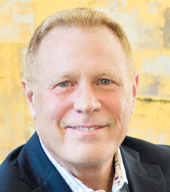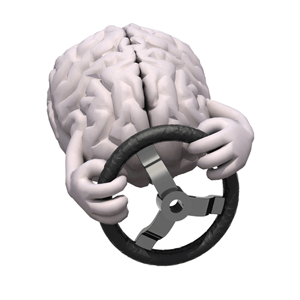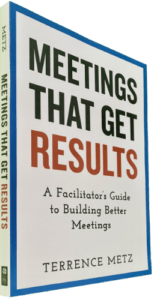Through more robust planning and preparation, the facilitator and methodologist can do much to amplify the brainstorming tool. Here are five activities to help you. The Harper-Collins book “Brainsteering: A Better Approach to Breakthrough Ideas” written by the brothers Kevin and Shawn Coyne reinforces these five, highly practical considerations to facilitate effective innovation sessions.
Develop Optimal Questions
If the deliverable is the marketing plan, you cannot ask, “What is included in the marketing plan?” The question is so broad as to be meaningless. Break it down. Mathematically, “Y” is a function of multiple “X”s and there are big “X”s and little “x”s. Draft, shape, and sharpen your questions in advance of the meeting, and then share them with your participants. Some of the big “X”s of a marketing plan include segmentation, targeting, positioning, messaging, media, etc.
The Coyne brothers emphasize that loosely managed sessions are inferior to approaches that provide more structure. Remember as well to sequence your questions. The target audience, for example, should be identified before discussing the messages to send. As consultants, we discovered that providing clients with answers is not as valuable as helping them focus on the optimal questions.
Select a Variety of Participants
If you want the same old answers, then clone yourself. If you want something new, then stir up the pot. Invite roles normally excluded such as customers who have terminated our services, employees who departed for other opportunities, or simply a diversity of departments and roles within your organization. Breakthrough ideas are dependent on “stirring up the pot.” Arm them with the questions in advance.
Lock in Your Analysis Method
Once ideas have been generated, they must be analyzed and frequently prioritized. Prepare yourself in advance (see MGRUSH ‘s Definition and Simple Prioritization tools). Any known constraints such as eliminating ideas that require regulatory approval need to be identified in advance. Do not permit a wasted session where the highly prioritized ideas are denied because they fail to comply with some internal standard or governance issue.
Break into Sub Teams
Encourage high-energy, no-discussion break-out sessions to generate lots of ideas quickly. This gives quiet people permission to speak freely and invigorates a group rather than keeping them locked down in a traditional meeting. We agree with the Coyne brothers that sub-teams sized from three to five people each provide an excellent forum for conversation and opportunity for breakthroughs. Appoint a CEO for each team (chief easel officer) and have them report back to the group at large when your analysis begins. (see How to Manage Breakout Sessions).
Police Your Sub Teams
Make sure they stay on topic and focus on the precise question(s). Do not allow them to drift and analyze their ideas. Rather, enforce their responsibility to make their ideas clear so that they can present their ideas with confidence. Instruct them on building a separate list of ideas worth capturing that do not answer the question precisely. We do not want to lose any good input, but we do not want to over-invest by spending time on the answers to questions other than those we want them to focus on.
The Coyne brothers fail at this point to advance the hardest step within Brainstorming, the analysis. Not surprisingly, this is where most leaders, groups, and methods are frail. Analysis is a major priority of our focus and curriculum. Continue to fortify your skill set with tools and improvement suggestions available with the hot links above.
______
Don’t ruin your career by hosting bad meetings. Sign up for a workshop or send this to someone who should. MGRUSH workshops focus on meeting design and practice. Each person practices tools, methods, and activities every day during the week. Therefore, while some call this immersion, we call it the road to building high-value facilitation skills.
Our workshops also provide a superb way to earn up to 40 SEUs from the Scrum Alliance, 40 CDUs from IIBA, 40 Continuous Learning Points (CLPs) based on Federal Acquisition Certification Continuous Professional Learning Requirements using Training and Education activities, 40 Professional Development Units (PDUs) from SAVE International, as well as 4.0 CEUs for other professions. (See workshop and Reference Manual descriptions for details.)
Want a free 10-minute break timer? Sign up for our once-monthly newsletter HERE and receive a timer along with four other of our favorite facilitation tools, free.
Related articles
- Are we brainstorming the wrong way? (holykaw.alltop.com)
- Generate Great Ideas by Connecting with Customers (seomoz.org)

Terrence Metz, president of MG RUSH Facilitation Training, was just 22-years-old and working as a Sales Engineer at Honeywell when he recognized a widespread problem—most meetings were ineffective and poorly led, wasting both time and company resources. However, he also observed meetings that worked. What set them apart? A well-prepared leader who structured the session to ensure participants contributed meaningfully and achieved clear outcomes.
Throughout his career, Metz, who earned an MBA from Kellogg (Northwestern University) experienced and also trained in various facilitation techniques. In 2004, he purchased MG RUSH where he shifted his focus toward improving established meeting designs and building a curriculum that would teach others how to lead, facilitate, and structure meetings that drive results. His expertise in training world-class facilitators led to the 2020 publication of Meetings That Get Results: A Guide to Building Better Meetings, a comprehensive resource on effectively building consensus.
Grounded in the principle that “nobody is smarter than everybody,” the book details the why, what, and how of building consensus when making decisions, planning, and solving problems. Along with a Participant’s Guide and supplemental workshops, it supports learning from foundational awareness to professional certification.
Metz’s first book, Change or Die: A Business Process Improvement Manual, tackled the challenges of process optimization. His upcoming book, Catalyst: Facilitating Innovation, focuses on meetings and workshops that don’t simply end when time runs out but conclude with actionable next steps and clear assignments—ensuring progress beyond discussions and ideas.




